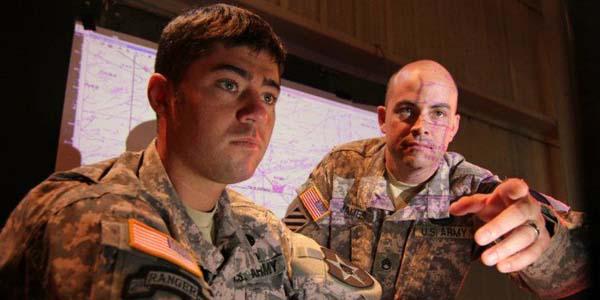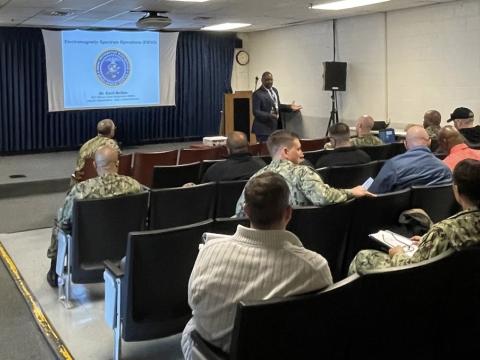Innovation Programs Fuel Greater Industry Creativity
The U.S. Army is using one of its laboratories to incorporate innovative small business solutions directly into the force in a matter of months instead of years. The effort has borne fruit in the recent past, and now the Army is combining small business innovations to attain solutions that have eluded larger traditional contractors.
When the Army needed small cloud computing systems to help intelligence analysts on the battlefield better scrutinize the massive amounts of video feeds from unmanned aerial platforms, officials turned to small businesses for a rapid solution. When it needed innovative technology for situational awareness and route prediction tools, small businesses answered the call. Some of the most creative solutions Robert Czajkowski says he has ever seen to fix military gaps and technological shortcomings have come from small businesses, which are eager to develop and market their products, gain recognition and vie for a chance to earn a slice of the federal money pie.
So much progress to military technology over the years has been made possible because of the Small Business Innovation Research (SBIR) program, which provides billions of federal dollars in research funding to small businesses often unencumbered by restrictive rules or suffering from a lack of inspiration.
“The main benefit is that the Army acquires a capability a lot quicker,” says Czajkowski, the project lead for the Tactical Capabilities Innovation Laboratory (TCIL), part of the Communications-Electronics Research, Development and Engineering Center (CERDEC) at Aberdeen Proving Ground in Maryland. “The TCIL tries to move products in and out of our environment in three to six months, tops. That’s a lot quicker than traditional ways. The ability to have a vendor we’ve never heard of before and to transition to the production phase within half a year, I think, is an extreme victory for the Army.
“The overall [SBIR] process is extremely innovative,” Czajkowski continues. “It’s agile. It supports a more efficient process to integrate relevant capabilities, and it helps the Army to eliminate redundant, stovepipe, stand-alone technologies.”
Since fiscal year 2010, CERDEC has awarded more than 550 SBIR contracts that resulted in $198 million in SBIR funding for just that Army center alone. SBIR programs overall provide more than $2 billion annually. Congress first mandated the effort in 1982 to increase the participation of small businesses in federal research and development (R&D) efforts, which ended up paving the way for a win-win for both government and industry (see page 32). Small businesses get a chance to compete on equal footing with contracting giants and develop technologies and services they then can market. Federal agencies can tap into creative innovations, often seeing results at a much quicker pace. One philosophy is that if necessity is the mother of invention, it could be said that competition for the dollar might be the father.
Formerly known as the Tactical Cloud Integration Laboratory, TCIL promotes fair and open competition for academia and industry partners, regardless of the size of the company or past experiences working with the U.S. government. “Over the last four years, we’ve looked at roughly 300 capabilities, integrated about 80 of the capabilities, and 20 have transitioned to the warfighter to use,” Czajkowski says. Because the office became more diverse and branched out to other platforms, the C in its name changed from cloud to capabilities.
Much of the work of TCIL feeds into the Distributed Common Ground System-Army (DCGS-A), which helps the Army eliminate redundant, stand-alone technologies that other service offices might be pursuing on their own, he adds. The undertaking saves money, consolidates expertise and speeds up fielding new technology to the troops. “It establishes a cohesive, isolated test and development—like a one-stop shop … to integrate mature capabilities and to be able to transition to the baseline,” Czajkowski says. The cloud baseline TCIL currently is using, for example, is INSCOM Futures Red Disk, version 1.3. TCIL also has other cloud architectures that vendors can use, including Rapid Deployment Kit (RDK) version 2.2. Regardless of which architecture the Army/TCIL uses, it is based on open standards and open-source tools that allow anyone to plug into the architecture without major code revisions or proprietary licenses, making TCIL user friendly to many users, including small businesses.
The lion’s share of TCIL’s industry connections come from the annual open house typically held in January, where businesses and academia present their wares and ideas, answering predetermined published requirements usually established by DCGS-A and the U.S. Army Training and Doctrine Command. “Most of the vendors we’ve identified over the last three to four years have been from our industry day,” Czajkowski says. “That keeps the playing field fair and open for everybody.” System engineers evaluate and score the 100 to 150 white papers TCIL receives each year, then narrow consideration to roughly 30 applicants for a second-round examination. Depending on requirements and available funding, the engineers award contracts to four or five vendors that receive the opportunity to realize their proposals. The next Industry Day is slated for January 20 at Aberdeen.
Small businesses have proved more flexible and efficient in delivering innovative answers and capabilities to military gaps and technology product shortcomings, says John Del Colliano, the positioning, navigation and timing (PNT) branch chief of CERDEC’s Command, Power and Integration (CP&I) Directorate. “We find that it’s a very powerful tool for us because it allows a level of innovation that, working with a larger business, isn’t always that obvious. Not to say that big businesses don’t have innovation, and not to say that big businesses can’t do good research and development, but what very large companies tend to do is they’re very good at producing products that are for sale, that you can put on the marketplace.”
Often, military directorates need more flexibility and agility to solutions, he adds. “Smaller businesses … don’t have the big overhead, those kinds of things. And to be quite honest, they’re a little bit hungrier to make the customer happy. They’re a little more flexible and agile and able to work with us and say, ‘OK, how can we adjust the way we’re planning to use this technology, based on what we’re learning, and create an even better product?’”
In spite of his inclination toward using small businesses, roughly one-third of the technology coming out of the PNT branch is produced by nongovernmental vendors, he says. “There are times that we want to pursue the technology ourselves, and there are times where we want to bring in … SBIR to solve the problem.”
Such was the time when PNT needed industry input to develop technology to gain much better accuracy in mapping movement of dismounted troops. Two private companies are working on a product called human motion characterization to marry the developing technology to existing inertial sensors that the soldiers on foot would wear to measure and map their movement. But current sensors assume all motion is in a forward direction, and they cannot discern if a solider moves sideways or backward, thus limiting the accuracy of the data, Del Colliano explains. So Scientific Systems Company Incorporated and Yotta Navigation Corporation are collaborating to develop technology to provide the high-fidelity response.
“At any given time, we have six to eight SBIR contracts going on simultaneously, sometimes multiple contracts for one effort,” Del Colliano says. “Usually, at most, we have two going on for one effort. I find them to be extremely valuable, and I look forward to trying to use SBIRs. I would probably do more if I could. … We find they’re very effective in supporting us with developing technologies—sometimes by making them better, sometimes by exploring new things. If nothing else, it definitely improves competition.
“The competition that comes out of exploring more options is just a win-win,” Del Colliano says. “It helps these small businesses, and it helps the Army.”





Comments